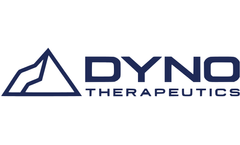Human Serum Articles & Analysis
7 articles found
The clinical research targets of nanobodies used for molecular diagnosis include HER2, HER3, PD-L1, AlbudAb, CD20, CD38, CD8, CEA and HGF, etc., mainly involving the field of tumor targeted diagnosis.Nanobodies for Disease TreatmentCamelid IgG antibodies are highly homologous to human IgG, and their immunogenicity can be reduced through nanobody humanization ...
Chemical-dependent linker The linker with disulfide bond is nucleophilic attacked by thiols to release the active payload. Although the reduction form of human serum albumin (HSA) in plasma is the most abundant thiol, it has poor reactivity to macromolecules. ...
Although ester bonds are theoretically more stable than carbonates in blood circulation, experimental results show that ADCs constructed from the former are less stable in human serum. The serum stability of the ADC was significantly improved (t1/2=36 hrs) by introducing a p-aminobenzyl (PABC) spacer, which showed some selectivity for the acidic ...
Blood glucose determination kit (glucose oxidase method) Clinically, blood glucose determination kits (glucose oxidase method) are mainly used to quantitatively determine the content of glucose in human serum. It is small in size, easy to carry, does not require special training, and can quickly detect blood glucose results at any time. The principles of the ...
The study of both serum antibodies and antibodies encoded by memory B cells in donors with recent AAV exposures can reveal key characteristics of human anti-capsid antibody responses and provide a more complete picture of anti-capsid antibody immunity. ...
The aim of this paper is to present a method for the labelling human albumin nanospheres with the short lived beta emitter 188Re. In this method stannous chloride is used as reducing agent and potassium sodium tartrate as transchelation agent. Optimal parameters of the labelling reaction and also, the stability of the radiolabelled nanospheres were established. Under optimal reaction condition, ...
The goal of the study was to develop an efficient method for radiolabelling of biodegradable human serum albumin microspheres with the beta emitter 188Re. The influence of different factors, as the reagents concentration, temperature, time, etc., on reaction yield was studied. ...




